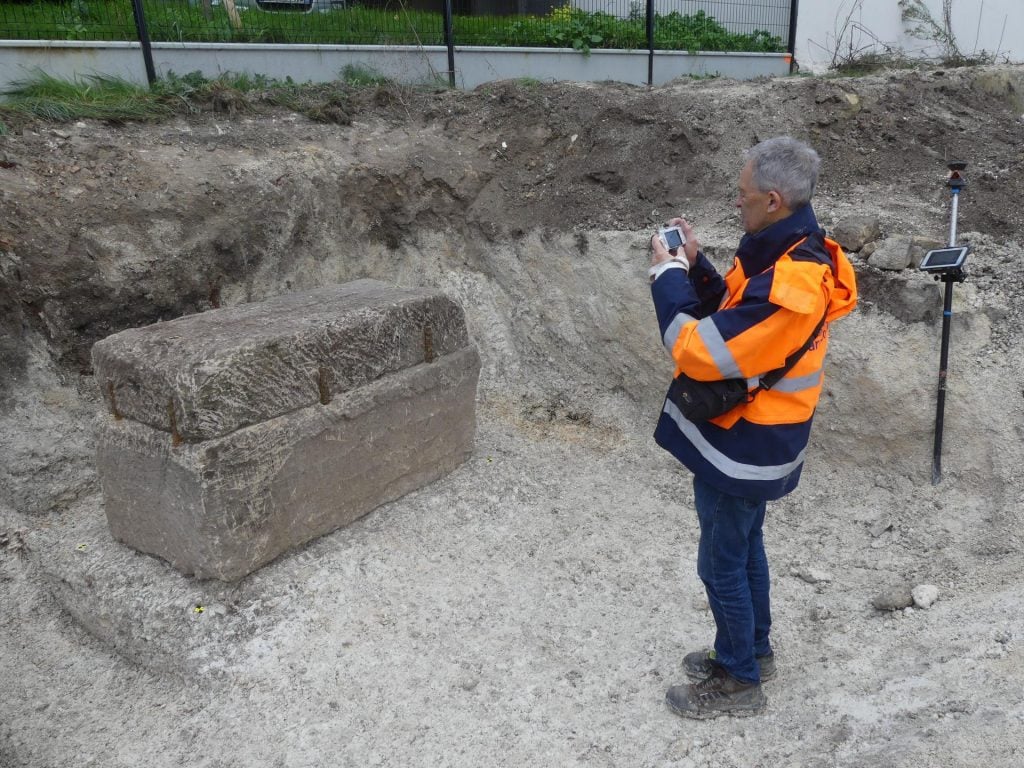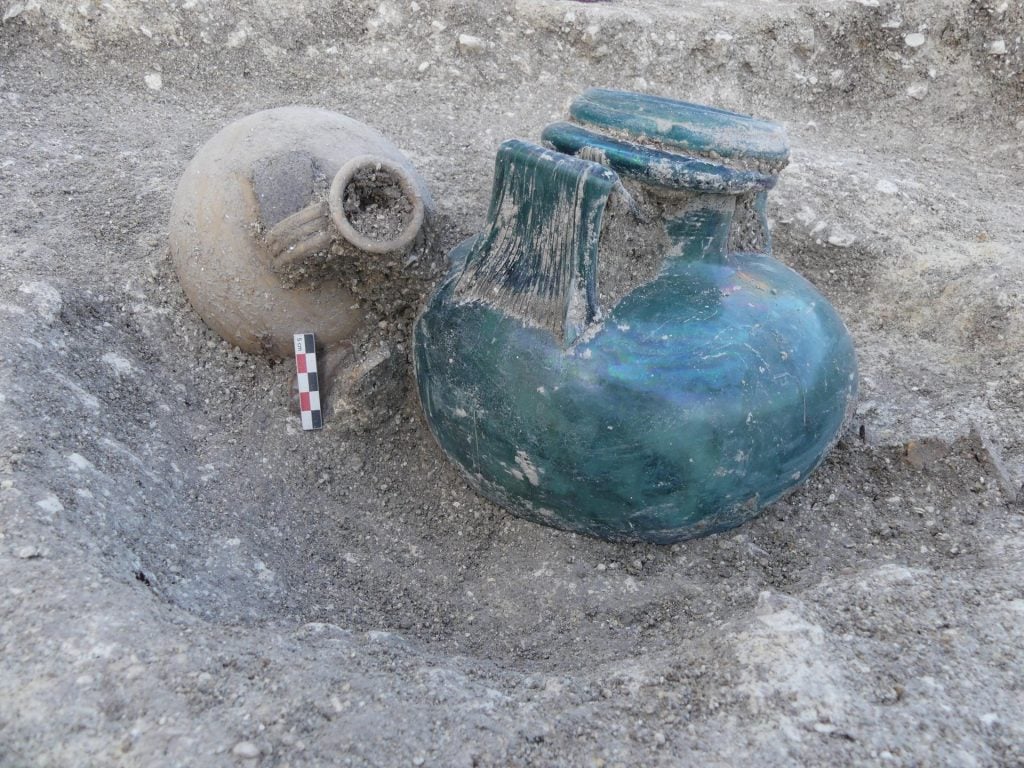Archaeology & History
Archaeologists in France Have Discovered a 2nd-Century Roman Sarcophagus, Still Fastened Close With Lead Staples
DNA will be taken from the skeleton and entered into an archeological database.

DNA will be taken from the skeleton and entered into an archeological database.

Richard Whiddington

During Julius Caesar’s eight-year conquest of Gaul, one tribe in particular, the Remi, availed themselves to the Romans. Their reward, once war concluded in 51 B.C.E., was to have imperial status granted upon their capital, Durocortorum, in what is today Reims, in northeastern France.
The city became a hub for Gallic roads and promptly boomed. It reached a population of over 50,000 inhabitants and was bestowed with all the architectures associated with a fine Roman city including a perimeter wall, a forum, bath houses, and a vast necropolis.
Spanning roughly two and a half square miles, it has been the site of rich archaeological pickings since the mid-19th century. Most recently, a team from France’s National Institute for Preventive Archaeological Research (Inrap) has been excavating a portion of the necropolis, building off work begun in the 1960s.
The 4000-square-foot chalky section on which archaeologists are currently focused was long thought unused given it rests in a former swamp. Not so. The Romans carved the land with large ditches that redirected water to the Vesle river and the Inrap team have found funerary remains of 20 burials.
Most arresting was an unopened sarcophagus from the 2nd century C.E. Still fastened with heavy lead staples, the sarcophagus is cut from coarse limestone, properties that have led experts to suggest it was repurposed from building materials.

A glass urn and jug excavated with the sarcophagus. Photo: © Sandrine Thiol, Inrap.
Inside, archaeologists found the skeleton of a woman alongside her funerary goods. These included four oil lamps, two glass bottles, a mirror resting near her head, an amber ring, and a comb.
Archaeologists will soon be able to create a richer profile of the woman. First, sediment samples from the inside of the sarcophagus will reveal how the body was treated. Next, DNA will be taken from a tooth and entered into a genetic database for the necropolis that Inrap is building and currently includes 80 samples.
Over the past two decades of research, Inrap has excavated around 5,000 tombs, adding them to the Musée Saint-Remi.
Earlier this year archaeologists in Reims found a giant Roman complex from the 2nd century CE that included two porticoed galleries measuring 65 feet in length.
More Trending Stories: